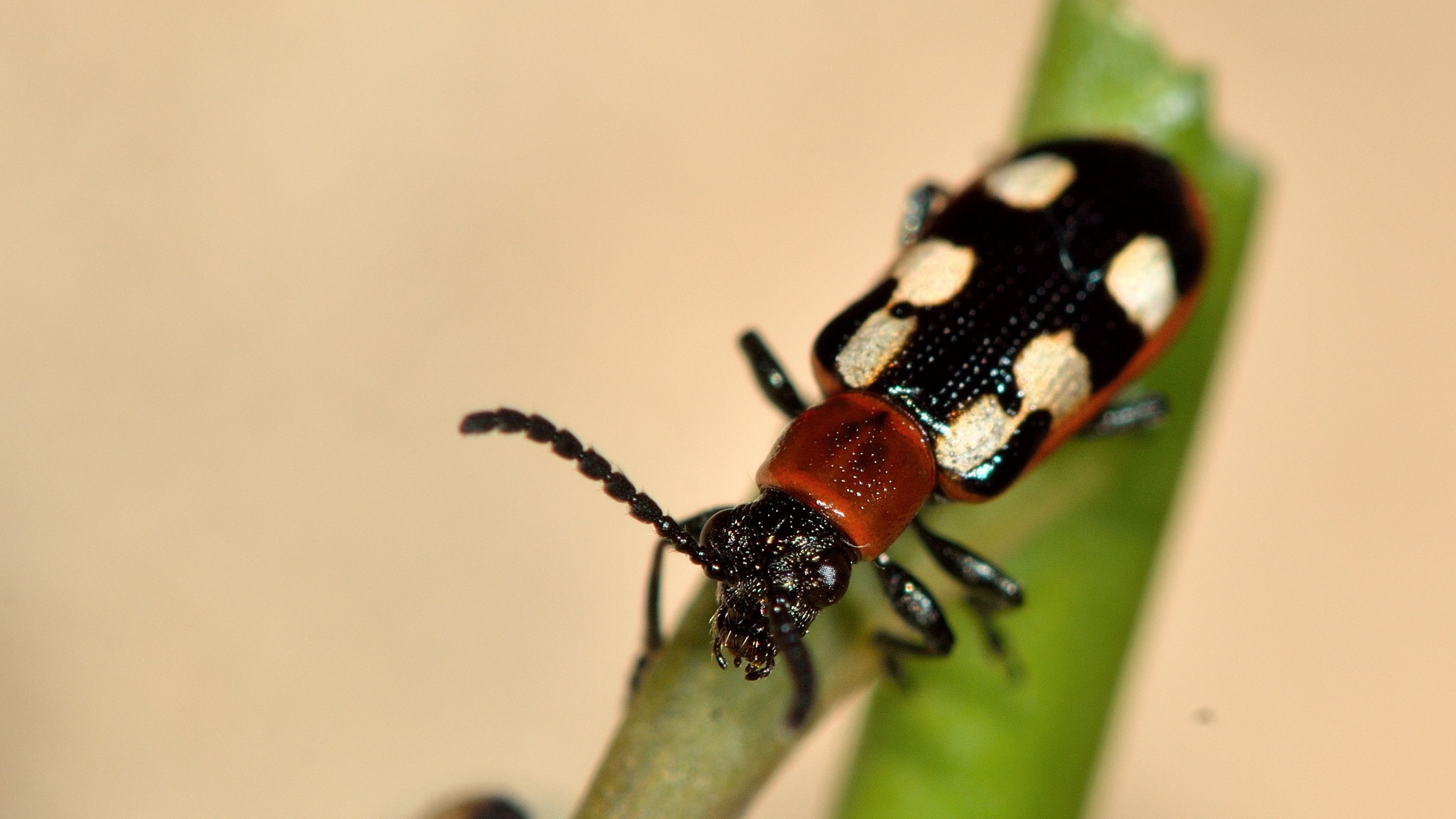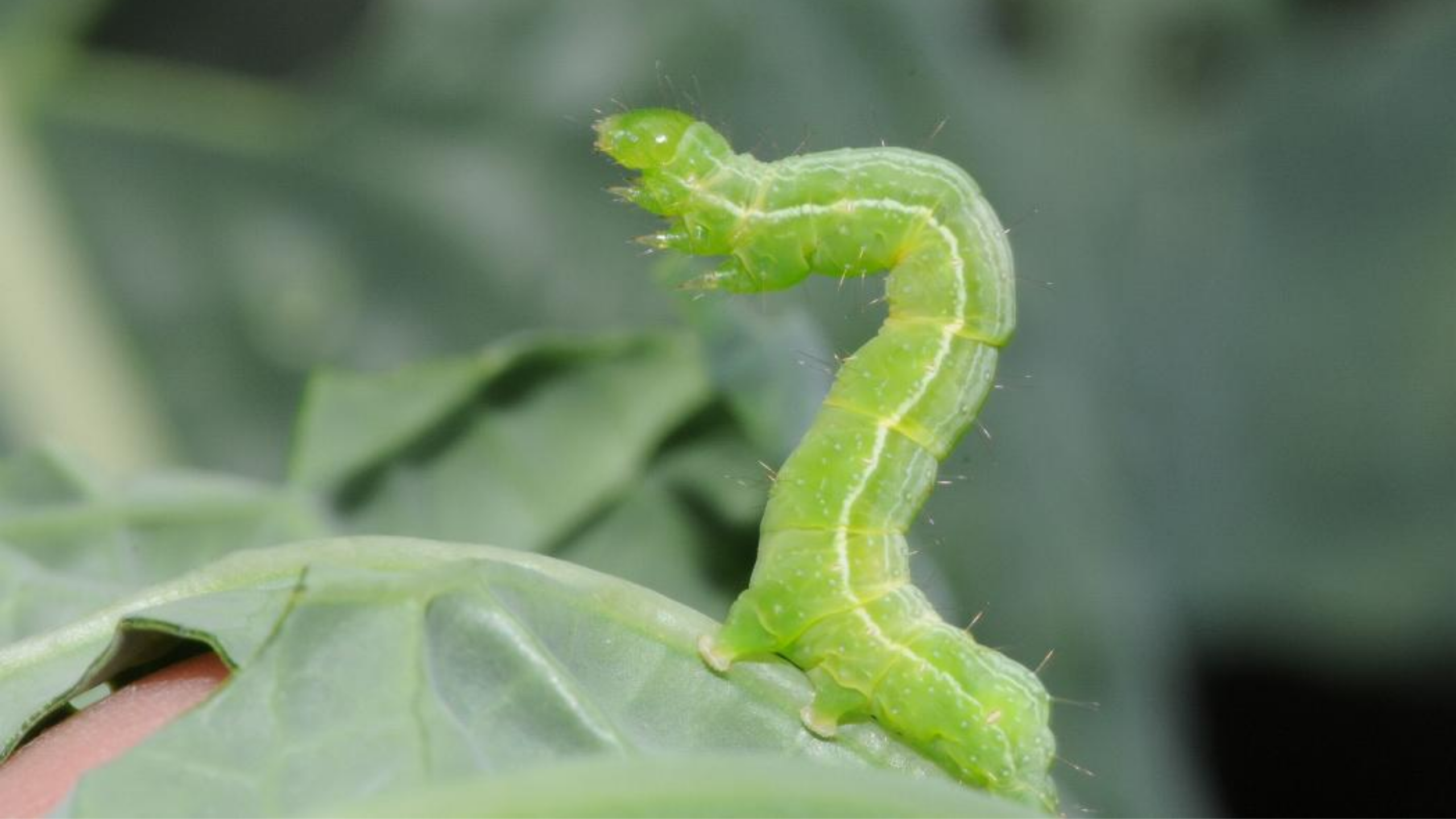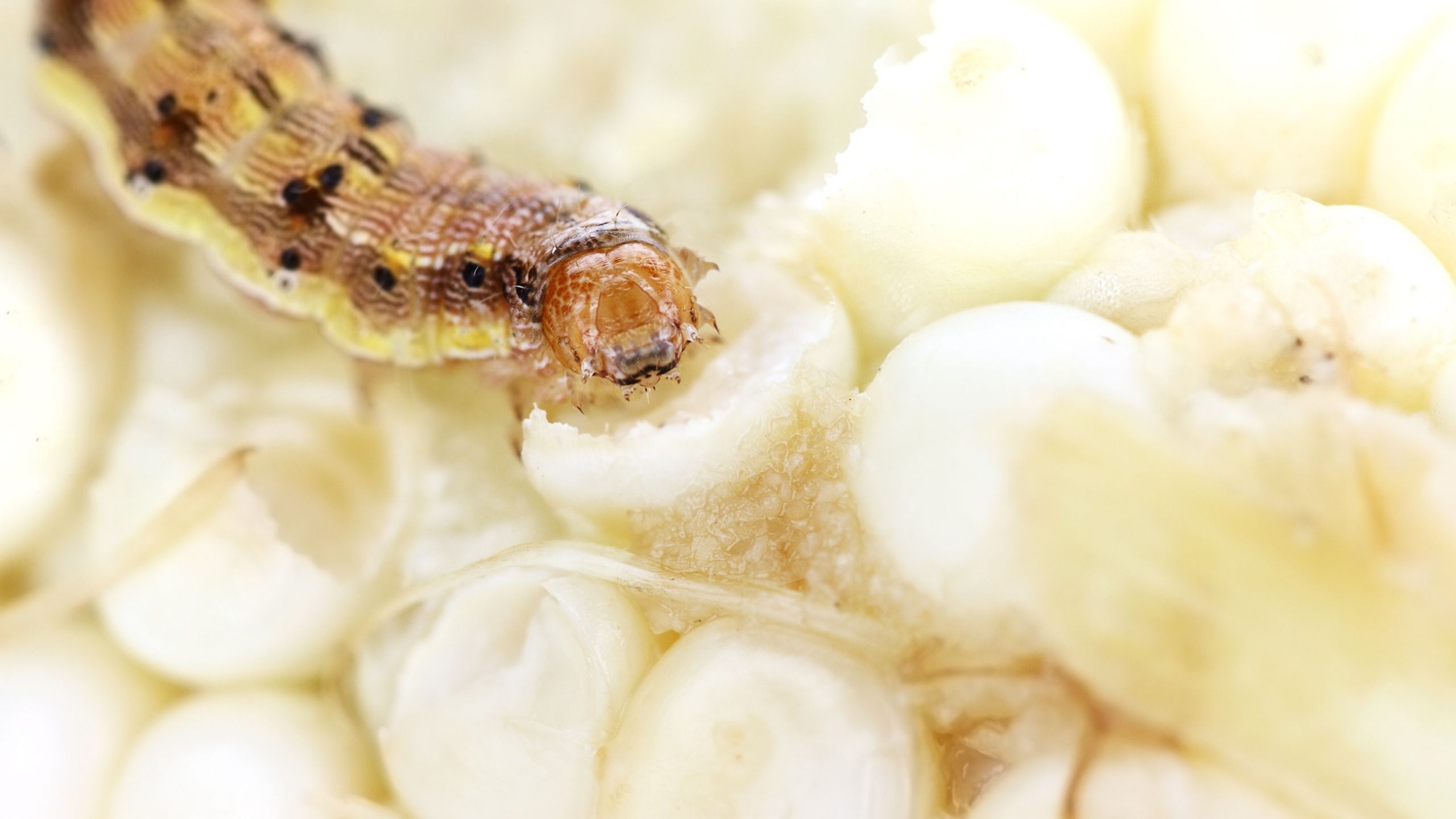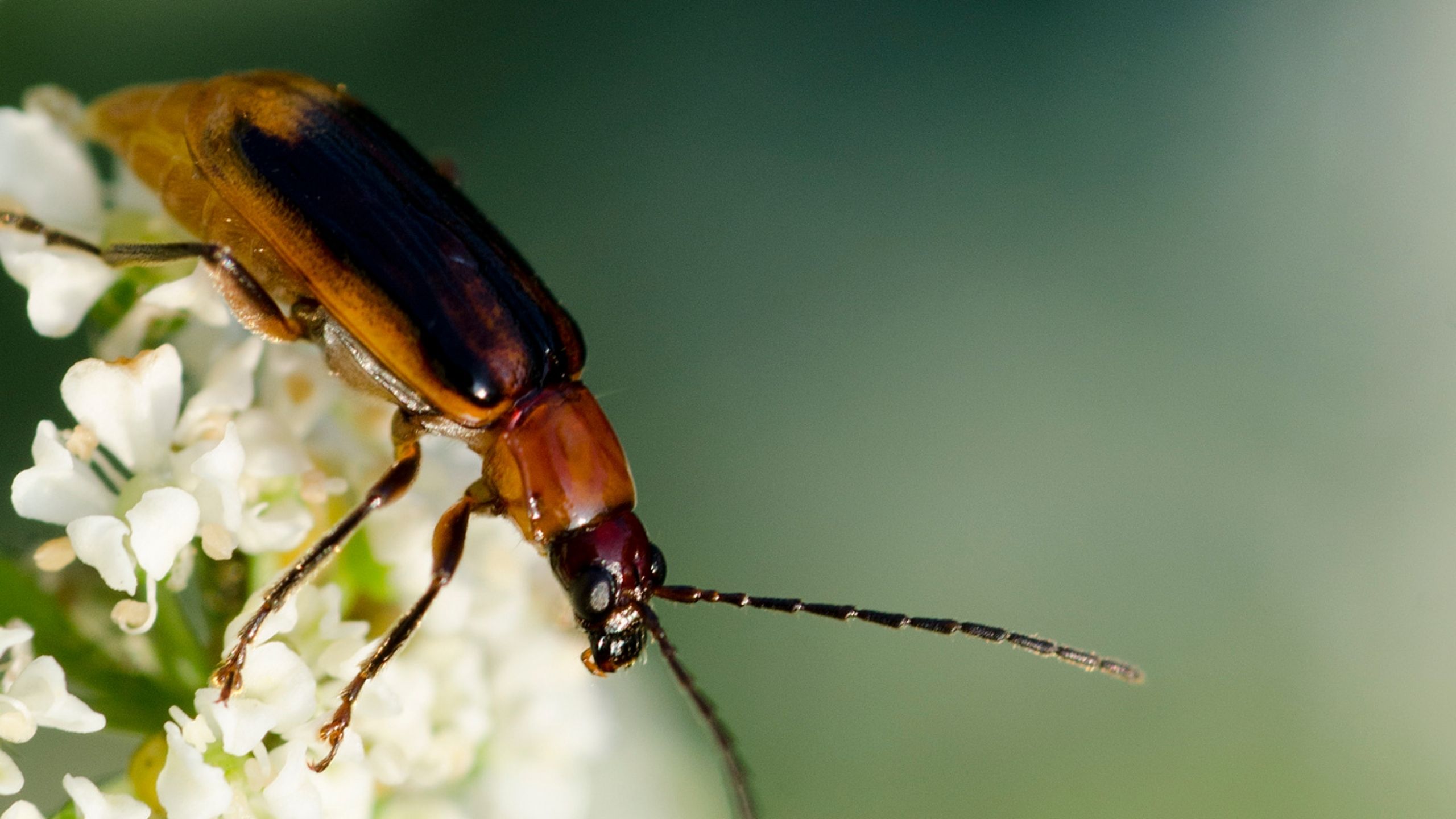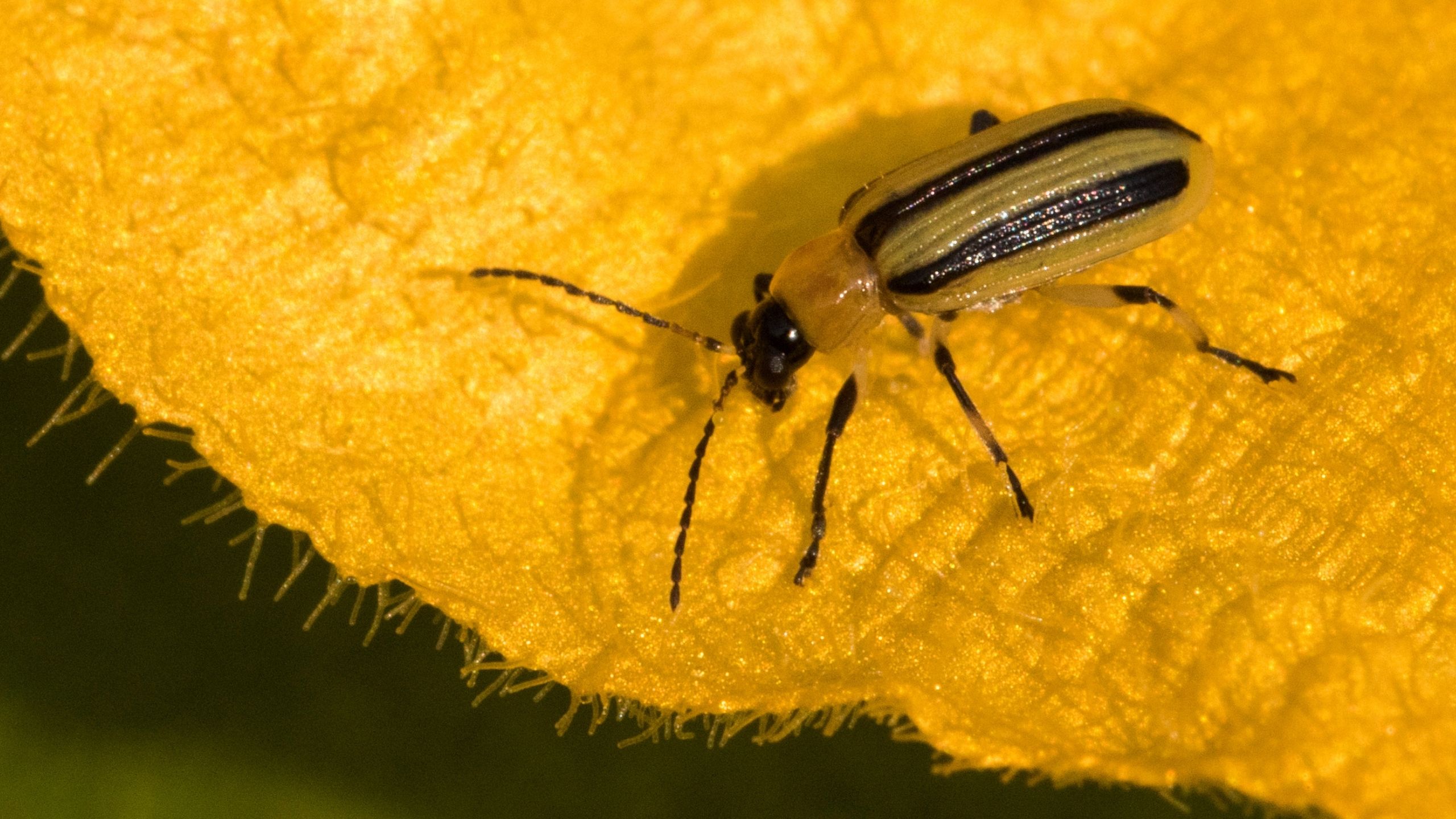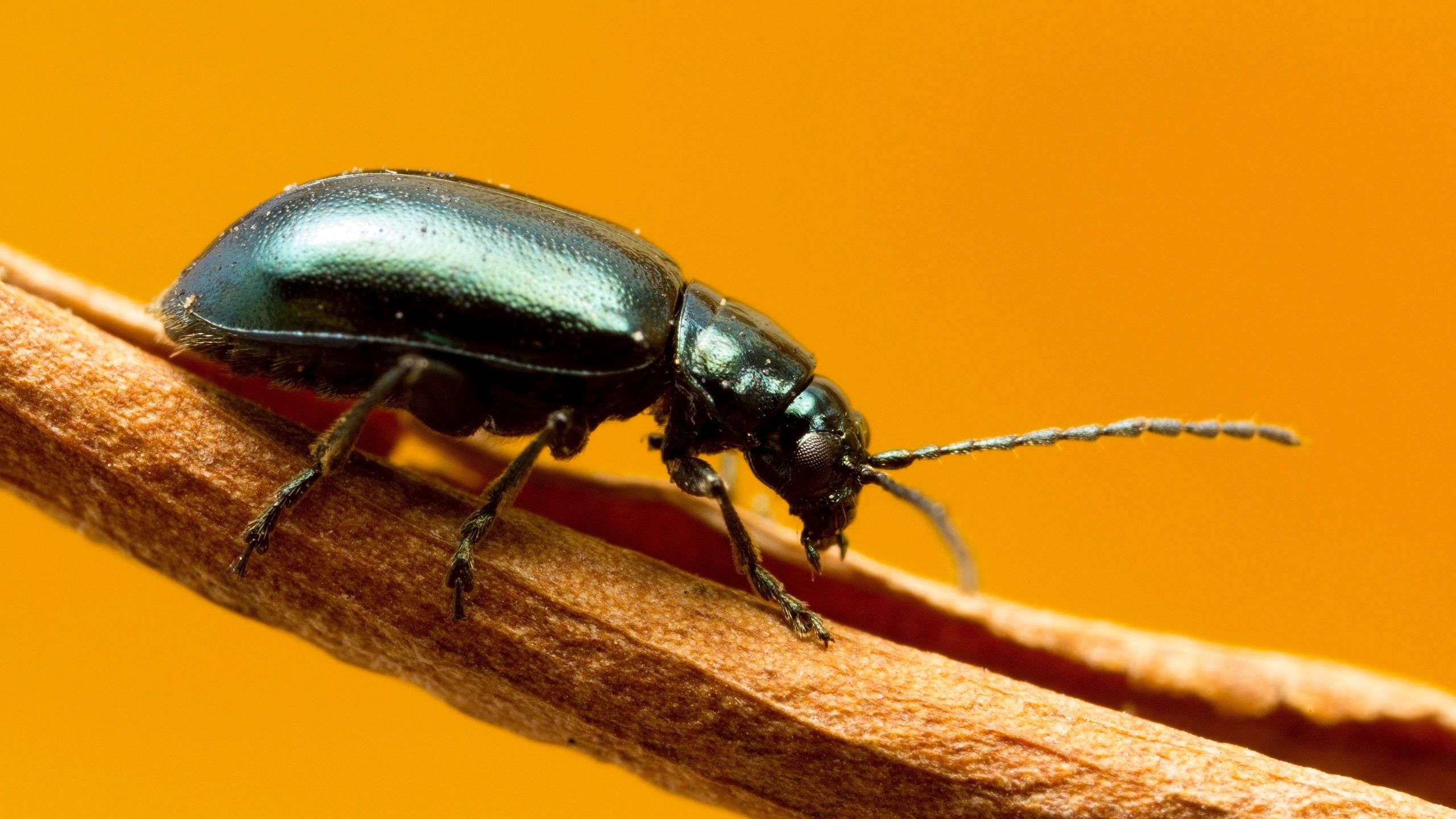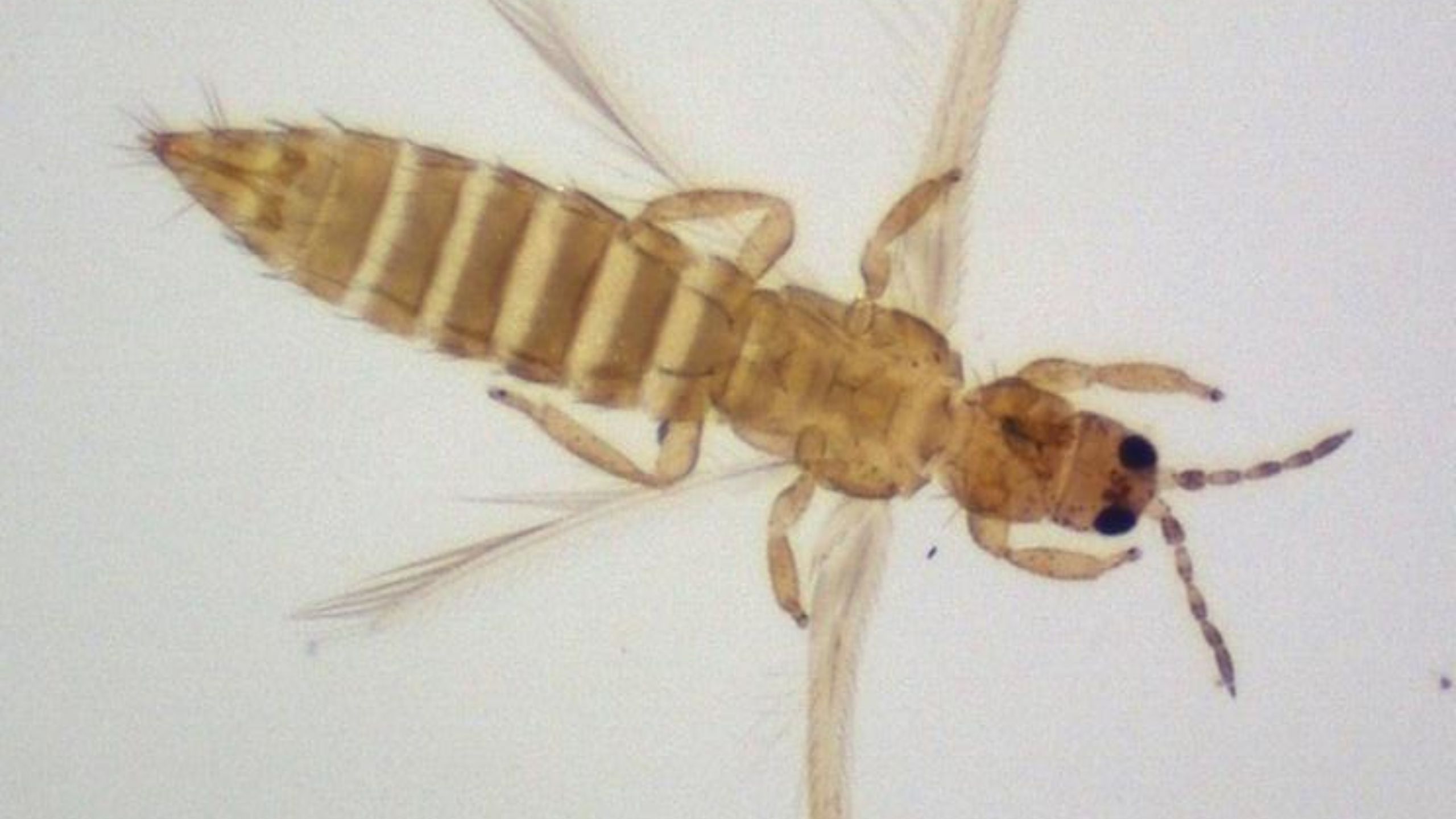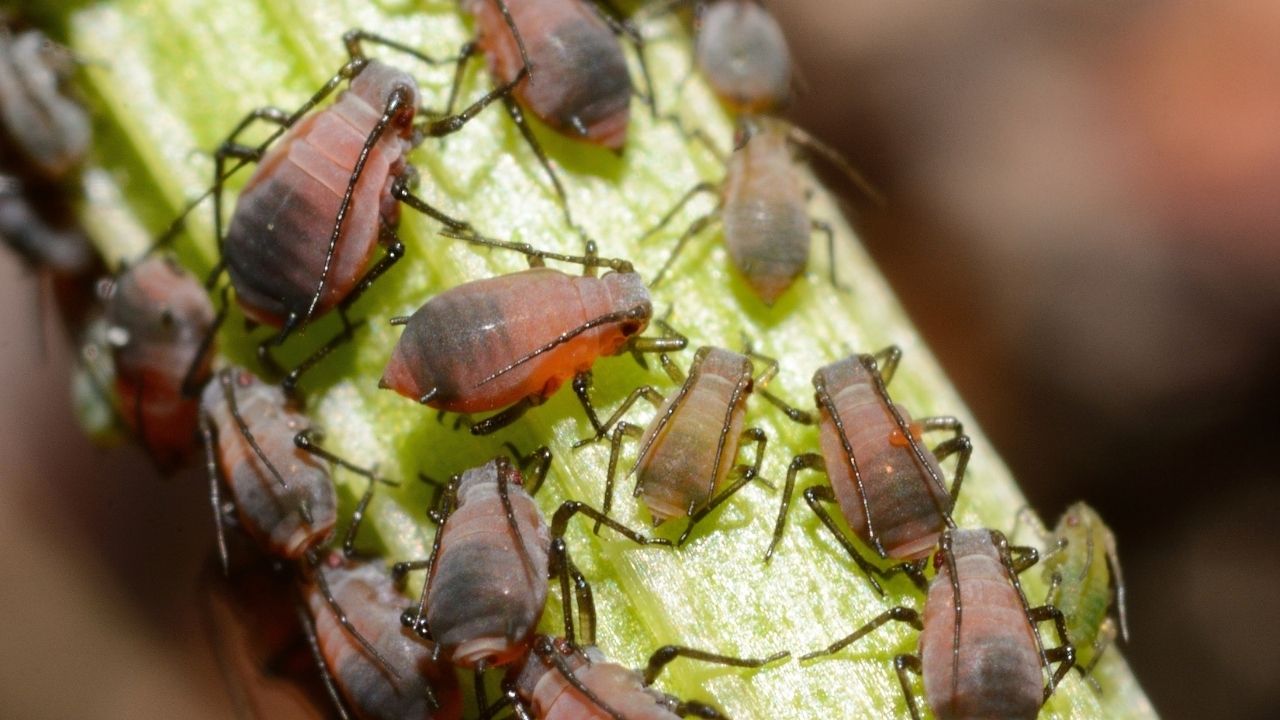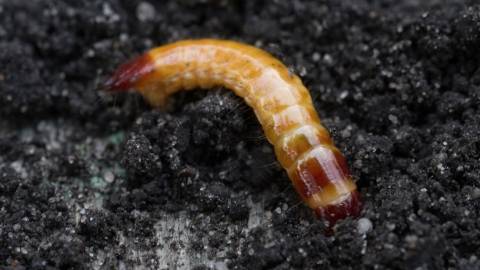Sap Beetles
December 2021
Nick Volesky, Vegetable IPM Associate • Zachary Schumm, Arthropod Diagnostician • Kalen Taylor, Agriculture Agent (Millard County)
Quick Facts
- Sap beetles are typically considered a secondary pest of corn and overripe fruits and vegetables.
- Sap beetles are broadly identified by their small and ovular bodies and club-shaped antennae.
- Adult beetles feed on corn silk, pollen, and tassels. Larvae feed on kernels inside the husk.
Sap beetles (sometimes called picnic beetles) are small dark beetles in the Nitidulidae family. Figures 1–5 show common species in Utah: fourspotted sapbeetle (Glischrochilus quadrisignatus), dusky sap beetle (Carpophilus lugubris), strawberry sap beetle (Stelidota geminata), corn sap beetle (Carpophilus dimidiatus), and the common pollen beetle (Brassicogethes aeneus). Sap beetles are attracted to sweet substances and food odors. They can be a significant nuisance at food processing plants, roadside fruit and vegetables stands, or anywhere food is kept uncovered outdoors. They often attack close to harvest and are found in crops that have pre-existing feeding damage from other insect pests.
Hosts
Sap beetles are drawn to sweet, damaged, overripe, or decomposing fruits and vegetables. In Utah, this is primarily sweet corn, but other produce attacked includes tomato, melon, apricot, peach, and raspberry.
Some species are pests of stored products such as dried fruit or grains, both in commercial practices and in homes. The common pollen beetle can be a serious pest of oilseed.
Identification
Sap beetles are broadly identified by their small and oval-shaped bodies that are usually flattened and black to brown in color (Figs. 1–5). Some species have orange to brown spots or markings on the body. Their head can be seen from above (i.e., not hidden under the body when viewed from the top), and their antennae often bear visible clubs at the end. The pronotum (see Fig. 5) is usually enlarged to the sides and has flattened edges. Additionally, many sap beetles will have a portion of the abdomen exposed and not covered by the wings when viewed from the top. The most common species that can reach pest status in Utah can usually be identified with a hand lens.
Four-spotted sap beetles are a shiny black color with four small orange spots on their front wings. They measure 4–7 mm (0.16–0.28 inch) long and a small portion of the abdomen is exposed from underneath the wings when viewed from the top (Fig. 1) Dusky sap beetles are a dull brown-black color and measure 2.8–4.5 mm (0.11–0.18 inch). Two large abdominal segments are visible and are not covered by the front wings. Two small brown “shoulders” may be visible on the wings (Fig. 2). Strawberry sap beetles are light brown, more of a flattened oval shape, and measure 2–3 mm (0.08–0.12 inch) in length. Only a small tip of the abdomen extends past the tip of the wings (Fig. 3). Corn sap beetles are entirely brown and measure 1.6–3.2 mm (0.06–0.13 inch). The wings maybe a different shade than the rest of the body, and two large abdominal segments extend past the tip of the wings (Fig. 4). Common pollen beetles range from 1.5–2.2 mm (0.06–0.09 inch) long. They are solid black (usually without any patterns or different shades). The body can appear pubescent (covered in small hairs), and two abdominal segments are exposed from underneath the wings (Fig. 5).
 Fig. 1. Four-spotted sap beetle (Glischrochilus quadrisignatus). Image courtesy of Udo Schmidt, CC BY-SA 2.0. |
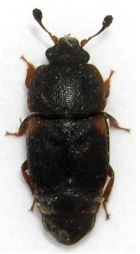 Fig. 2. Dusky sap beetle (Carpophilus lugubris). Image courtesy of Chris Rorabaugh (roar.photos). |
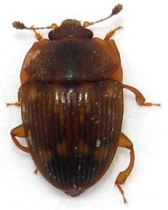 Fig. 3. Strawberry sap beetle (Stelidota geminata). Image courtesy of Chris Rorabaugh (roar.photos). |
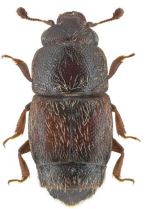 Fig. 4. Corn sap beetle (Carpophilus dimidiatus). Image courtesy of Chris Rorabaugh (roar.photos). |
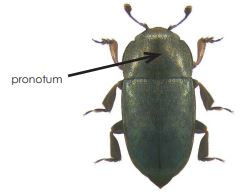 Fig. 5. Common pollen beetle (Brassicogethes aeneus) |
All sap beetle eggs are white and oval-shaped. Larvae are white when they hatch but turn yellow as they mature. They vary in size depending on the species, but the length is similar to the adult form. They have a
light brown head, visible mouthpart, and three small legs (Fig. 6). Pupae are white and tan right before adult emergence and average 4.5 mm (0.17 inch) long (Fig. 7).
 Fig. 6. Sap beetle larva (Arrow: visible external mouthparts). Image courtesy of Matt Bertone, CC BY-ND-NC 1.0. Fig. 6. Sap beetle larva (Arrow: visible external mouthparts). Image courtesy of Matt Bertone, CC BY-ND-NC 1.0. |
 Fig. 7. Sap beetle pupa. Image courtesy of Ken Gray, Oregon State University. Fig. 7. Sap beetle pupa. Image courtesy of Ken Gray, Oregon State University. |
Life Cycle
Life cycles vary among sap beetle species. In Utah, sap beetles can have multiple generations per year. The speed of development from egg to adult depends on food availability and food type but can take three or more weeks (Peng & Williams, 1991). Temperature and weather also impact development time.
Adults overwinter in protected places, such as decaying vegetation, debris, or in the soil. Females lay eggs throughout the season, starting in spring. Initially, they lay eggs on decaying or rotting vegetation on the ground or under the soil, such as decomposing corn ears or other plant material from the previous season (Myers, 2004). Eggs from later generations are laid on fruits and vegetables that are damaged or already overripe or rotting. Species that can be pests of stored products will lay their eggs on damaged grains (such as cereal) or dried fruits. The duration of the egg stage usually lasts 2-10 days. Once hatched, larvae develop through three different instars. Larvae will feed for two or more weeks depending on the species and environmental conditions. Pupation occurs in a small cell in the soil near the initial larval food source; beetles will drop to the ground before pupation if necessary. The pupal stage lasts 8–12 days (Myers, 2004).
Damage
Corn is one of the main economically important hosts of most sap beetle species. Generally, they are a secondary pest; however, they may become a primary pest if populations are high. They often invade corn that has already been damaged by corn earworms, raccoons, or birds.
Adult beetles feed on corn silk, pollen, and tassels (Fig. 8). Larvae feed on kernels inside the husk. Larvae may hollow out kernels in the upper half of the ear (Fig. 9). Sweet corn varieties tend to be more susceptible to beetle damage than field corn. Many hybrid, super-sweet corn varieties have poor tip coverage by the husk and a higher concentration of sugar, therefore attracting more beetles while simultaneously providing easier entry to the kernels. Adults and larvae may cause feeding damage on other crops as well (Fig. 10).
 Fig. 8. Adult sap beetles feeding on corn kernels. |
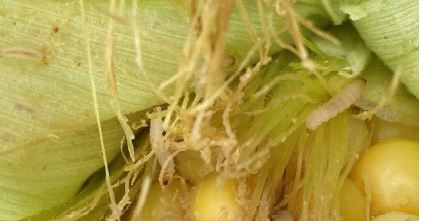 Fig. 9. Sap beetle larvae feeding on corn kernels. |
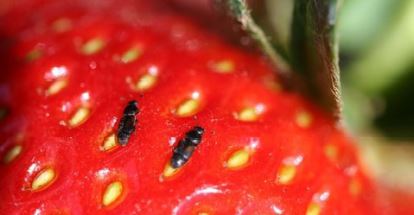 Fig. 10. Sap beetles feeding on a strawberry. Image courtesy of Mark Bolda, University of California Agriculture and Natural Resources. |
Monitoring
It can be difficult to monitor for sap beetles because much of the damage occurs inside the husk. Beetles can be found by sifting through silk, tassels, or by opening an ear of corn and looking for larvae. Setting and checking sticky traps or pheromone traps can help to monitor numbers and provide some control for sap beetles (Figs. 11-13). Construct a bait trap by placing an empty container near the production site. Use baits like fermented plant juices, overripe fruit, vinegar, or a molasses-water-yeast mixture.
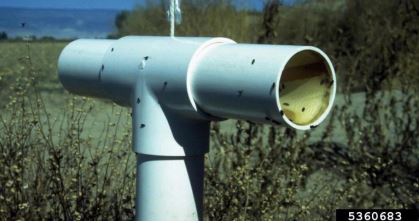 Fig. 11. Sap beetles attracted to pheromone trap near corn field. Image courtesy of Eugene E. Nelson, Bugwood.org. Fig. 11. Sap beetles attracted to pheromone trap near corn field. Image courtesy of Eugene E. Nelson, Bugwood.org. |
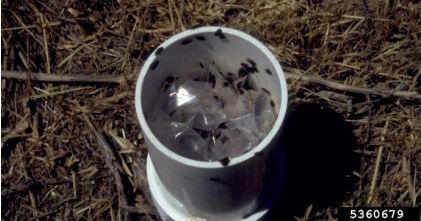 Fig. 12. Sap beetle bait trap in home garden. Image courtesy of Eugene E. Nelson, Bugwood.org. Fig. 12. Sap beetle bait trap in home garden. Image courtesy of Eugene E. Nelson, Bugwood.org. |
 Fig. 13. Multi-pest sticky trap designed for use in home foodstorage. Image courtesy of Amazon, www.amazon.com/JF-oakes-Pantry-Beetle-Pre-Baited. Fig. 13. Multi-pest sticky trap designed for use in home foodstorage. Image courtesy of Amazon, www.amazon.com/JF-oakes-Pantry-Beetle-Pre-Baited. |
Management
Preventative measures are the best management practices to control sap beetles. Primary control options for this pest are cultural, however some insecticides are also available.
- Bait and pheromone traps will allow you to both monitor and control beetle numbers. Using a sugary bait along with a pheromone will increase trap attractiveness.
- Field sanitation will keep beetle numbers down. Sap beetles are attracted to fermented plant juices and damaged corn. Do not let corn become overripe and rot in the field. Remove overripe or damaged corn quickly and keep cull piles away from the field.
- If possible, avoid planting near fruit or vegetable dump sites or compost areas. Dump sites and compost areas will typically have a higher number of beetles which will move to the corn.
- Preventing damage from primary pests will help prevent an infestation. Two of the more common pests are corn earworm and earwig. If their populations can be controlled, it will help to keep the sap beetles at bay.
- Planting resistant varieties with better husk protection will make your crop less susceptible to corn earworm and sap beetle infestations. Resistant varieties include Country Gentleman, Golden Security, Tender Joy, Trucker’s Favorite, Stowell’s Evergreen, and Victory Golden.
- Plow under crop debris directly after harvest to destroy overwintering and breeding sites.
- Sap beetles are typically late-season and postharvest pests, so chemical control isn’t always economically appropriate. However, in corn production where they affect ears, insecticide may be necessary (Table 1).
Table 1. Insecticide Options for Sap Beetle Control in Agricultural Crops*
| Active Ingredient | Brand Name | Use |
|---|---|---|
| Acetamiprid | Assail | Commercial |
| Alpha-cypermethrin | Fastac | Commercial |
| Bifenthrin + Zeta cypermethrin | Hero, Steed | Commercial |
| Carbaryl | Carbaryl, Sevin | Commercial |
| Esfenvalerate | Asana, S-fenvaloStar | Commercial |
| Gamma-cyhalothrin | Declare | Commercial |
| Lambda-cyhalothrin | Warrior II | Commercial |
| Lambda-cyhalothrin | Spectracide Triazicide | Home |
| Lambda-cyhalothrin + Chlorantraniliprole | Besiege | Commercial |
| Novaluron | Rimon | Commercial |
| Pyrethrins + Piperonyl butoxide | Worry-free Insecticide and Miticide | Home |
| Zeta-cypermethrin | Mustang | Commercial |
| Zeta-cypermethrin | GardenTech Sevin | Home |
*Verify products are registered for the intended crop use.
Make sure to read product labels to confirm the PHI (preharvest interval), this may vary between crops.
References & Further Reading
Capinera, J. (2001). Handbook of vegetable pests. University of Florida.
Myers, L. (2004). Sap beetles of Florida, Nitidulidae (Insecta: Coleoptera: Nitidulidae) [Fact sheet]. Publication EENY256.
University of Florida Extension, Institute of Agricultural Food Sciences.
Peng, C., & Williams, R. N. (1991). Influence of food on development, survival, fecundity, longevity, and sex ratio of Glischrochilus quadrisignatus (Coleoptera: Nitidulidae). Environmental Entomology, 20(1), 205–210.
Related Research


